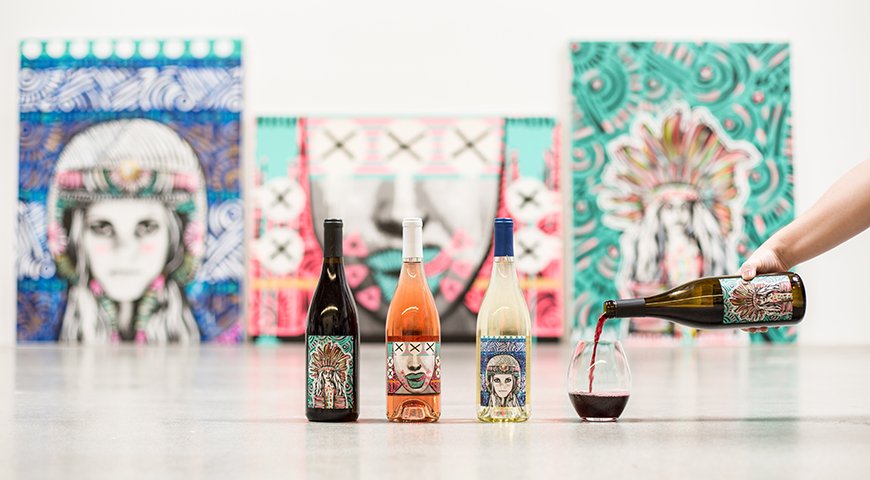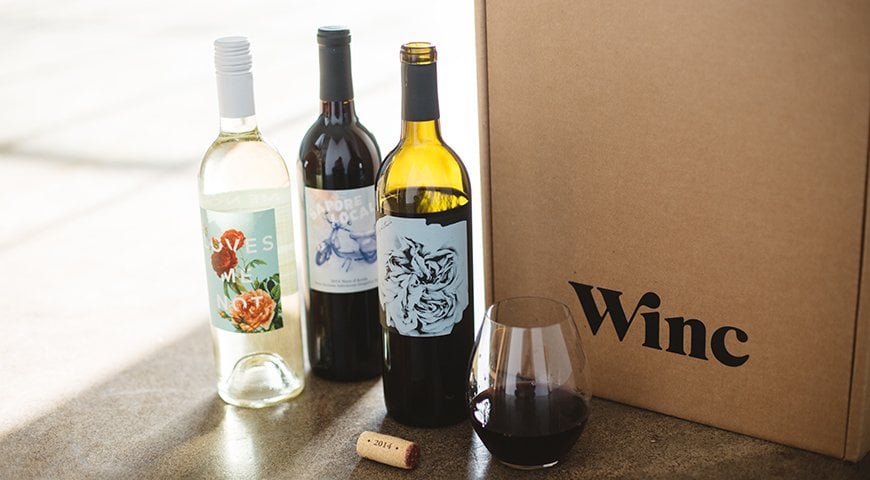There are 79 million millennials in the United States—all are now of drinking age, and 36 percent label themselves wine-drinkers, according to the Wine Market Council, a nonprofit association of grape growers. It was this consumer base of more than 28 million people that Xander Oxman, Geoff McFarlane and Brian Smith wanted to reach when they Club W W in 2012, and they’ve now relaunched their brand as Winc.
“We found an underserved market on the customer side, which was younger, tech-savvy people who were looking for a different wine experience,” says Brian Smith, the company’s chief wine officer. “On the supply side, we felt that a lot of really great small- and medium-sized winemakers were not connecting in a meaningful way with that audience, and they wanted to.”

Originally, Club W sent customers wine recommendations based on their preferences with the option of either buying directly from the club or signing up for a $39-a-month subscription to receive three new wines every month. As customers gave feedback about the wines they tried, the company developed a database of information about wine preferences and evaluated where there were gaps in the market. The founders started thinking about how they could fill those gaps.
An advanced sommelier, Smith ran the wine programs at Jackson Hole Wine Company and New York’s Clo Wine Bar, among others, and he produces wines under his own label, Crazy Beautiful Wine Co. Together with the Club W team and its partner wineries, Smith began developing exclusive wines for Club W customers, and as that side of the business expanded, Winc was born.
Although the membership-based club still exists, now it’s not the company’s main focus. Instead, Winc relies on its direct-to-consumer distribution strategy to produce and sell wines straight to customers. Worth spoke with Smith about the company’s evolution since 2012 and why this model works.

Q: HOW DID CLUB W, WHICH ORIGINALLY JUST DISTRIBUTED WINES FROM EXISTING WINERIES, START PRODUCING ITS OWN WINES?
Club W made wine really approachable and offered discovery. As we started to grow, we talked to some of the partner winemakers that we really liked. The natural inclination was to ask them, “Hey, can we make wine with you? What if we make a few barrels together?” These collaboration wines were met with even more enthusiasm than some of the other wines that we were doing. That encouraged us to go deeper into the supply chain—actually working with the vineyards and farmers and carrying the wine all the way through.
WHY DID THAT WORK?
We completely reimagined the supply chain. We had a direct connection with our customers on a national basis—that allowed us to take some risks and experiment because we knew we had this audience that trusted what we were doing.
WHAT DID YOU DO TO APPEAL TO A MILLENNIAL AUDIENCE IN PARTICULAR?
We built trust. We have a great feedback loop that doesn’t really exist anywhere. [Customers rate and review wines they receive]. We hit on many of the trends that I think are particularly relevant to this demographic. People like origin stories, so telling great stories around origin connects customers to where the wine comes from. We also drive the quality—in terms of the price-to-quality ratio—on every bottle, regardless of price point. Our model has been to compress every element of production—corks, bottles, all of that. So we have some scale there that allows us to make unique, cool, smaller-bottle wines, but we’re also getting some of the economies of scale of a larger winery.
WINC RECENTLY COMPLETED A $17.5 MILLION-ROUND OF FUNDING LED BY SHINING CAPITAL AND BESSEMER VENTURE PARTNERS, BRINGING THE COMPANY’S TOTAL FUNDING TO $30 MILLION. WHY DO YOU THINK THIS CONCEPT APPEALS TO INVESTORS?
Wine is a huge addressable market that’s relatively unchanged, and Winc and Club W have found a way to connect with consumers around this particular category that hasn’t been possible before. I think that’s really compelling, and seeing the connectivity, the growth we’ve had, the way we structure our company and the transparency is a unique model that hasn’t existed, so there’s a lot of interest.

THE WINE INDUSTRY FAMOUSLY CLINGS TO ITS TRADITIONS. HOW DID PEOPLE REACT WHEN YOU INTRODUCED THIS CONCEPT?
I don’t think anyone has understood us from the very beginning. For the past four years, every time we tell people, we get strange looks. But I think it’s two things: We want to innovate, and we want to be somewhat irreverent. We’re always pushing into these new things. We have a respect for the artisans of wine and the heritage and the culture. If people actually look at what we’re doing and how committed we are to wine in body, [they’ll get it]. I think the customer will get it before the wine industry does, actually.
SOME OF YOUR WINES ARE GETTING SOME RECOGNITION ON RESTAURANT WINE LISTS, THOUGH.
That just sort of happened—there was a natural gravity for us. As we made this shift to wine production, people responded to the wines we were making. We also partner with a lot of chefs, and that was the initial pull into some of these restaurants. We made a wine with [L.A.-based chef] Michael Voltaggio—an orange, experimental wine. He got to taste our other wines, and that naturally pulled us into his program. It’s awesome to see people enjoying our wine in the context of a beautiful restaurant with a chef who really cares about food. That’s incredibly exciting for us.
WHAT DO YOU THINK THE TRANSITION TO WINC MEANS FOR THE COMPANY?
We’ve been a company that’s always solved for the customer. This has taken us in a number of different directions as Club W, but I feel like we’ve been headed toward this for a long time and Winc really represents that. We still have so much wine that’s in barrels and tanks that are the next level from where we’ve been. We have so much wine coming out over the next six months, and I’m so excited about the products and concepts that we’re going to roll out as we change over to this name.







